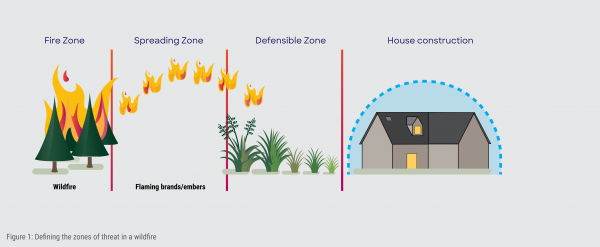Feedback on the Natural Hazards Plan Change 85 Issues and Options report is now open until Monday 5 May. Read more and share your thoughts.(external link)
Wildfires are unwanted, uncontrolled fires in the environment. They can spread quickly in dry and windy conditions, especially on vegetated hillslopes. Wildfire can be started from natural, accidental or deliberate ignition sources.
Wildfire can happen anywhere in our district. However, there are some communities that are particularly vulnerable, such as those located in areas of dense fire-prone vegetation (e.g. pine forest, kanuka/manuka or other expansive flammable species), on hilly areas (where fire spreads quicker), or locations that have limited or single access.
The Pigeon Valley fire has been our largest wildfire in Tasman to date. It was started on 5 February 2019 by sparks from an agricultural contractor working in a dry, stony paddock during a prolonged summer drought. Over the coming days the fire would burn through 2,300 hectares of commercial plantation forest, farmland and rural residential property. Incredibly, only one home and a shed were also lost in the fire. The event was a significant civil defence emergency, with over 3,000 people being required to evacuate their homes, including all of Wakefield village.
Wildfire can destroy anything in its path including buildings and vegetation and can isolate people or communities. Wildfires do not follow property boundaries and in the right conditions, embers can be blown more than 2km ahead of the fire and start new fires.

Pigeon Valley wildfire (Feb 2019)
Nationally, climate change is increasing the risk of wildfires occurring. Climate data projections for Tasman predict that average temperatures will be 0.8-1.5 C warmer by 2050, with the greatest seasonal change projected in summer. The number of hot days (when the temperature is above 25 C) is also projected to increase from an average of 6.9 hot days per year up to 30.6 more hot days per year by 2050. Tasman’s annual rainfall is projected to change by between -6.6% and 2.3% by 2050 and between -13.1% and 4.4% by 2090.
Read more about climate data projections from Climate projections summary dashboard | Ministry for the Environment. (external link)
We have started work on a natural hazards plan change(external link) to the Tasman Resource Management Plan (TRMP). As part of the process, we are improving our knowledge about local hazards and sharing that information with affected landowners and communities.
Council does not hold technical information on wildfire but we recognise that it can occur anywhere in our district and the risk of wildfire is increasing with climate change. Pigeon Valley fire, and more recent wildfire events that have occurred elsewhere in New Zealand, have highlighted the key role resource management plans play in wildfire risk reduction. Plans can ensure that new development is appropriately located and wildfire mitigation measures are put in place (such as vegetation setbacks from residential zones).
While the TRMP does have some provisions regarding wildfire, the plan change process provides an opportunity to strengthen our planning framework.
What can I do to help defend my property from wildfire?
Prior to removing any highly flammable plants, make sure you check our TRMP rules regarding indigenous vegetation clearance, to confirm if your activity is permitted or if you need a resource consent (Section 18.5). There are also particular rules for indigenous vegetation clearance within the St Arnaud Landscape Priority Area (Section 18.2).

Figure 1: Defining the zones of threat in a wildfire Source: Wildfire Safer Housing Guide, Fire and Emergency New Zealand, August 2022
Where do I find information about what to do before, during and following a wildfire event?
Information, advice on getting prepared and what to do before, during and after a wildfire event can be found on the Fire and Emergency New Zealand website. The Nelson Tasman Emergency Management Group website also has helpful information on getting ready for all kinds of natural hazards and during an event.
How is the Council considering wildfire in our work programmes?
As we better understand wildfire in our district, we are taking into consideration this natural hazard in our work programmes such as:
Next Steps
The next steps in reviewing the TRMP natural hazards plan change will be to engage with the community on the ‘issues and options’ for managing our natural hazards, including wildfire. Engagement is proposed to begin early to mid 2025 and will seek the community’s views on the options for updating the TRMP provisions that relate to natural hazards.
Landowners, iwi, stakeholders and the wider community will have opportunities to input into the natural hazards TRMP plan change as we progress through the plan drafting stages.
Where do I find information about what to do following a natural hazard event?
Information, advice on getting prepared and what to do during a natural hazard event can be found on the Nelson Tasman Emergency Management Group website.
The Natural Hazards Commission Toka Tū Ake also has information and advice for home owners, tenants and home buyers to ensure your home is safer for natural hazards.
Where can I find more information?